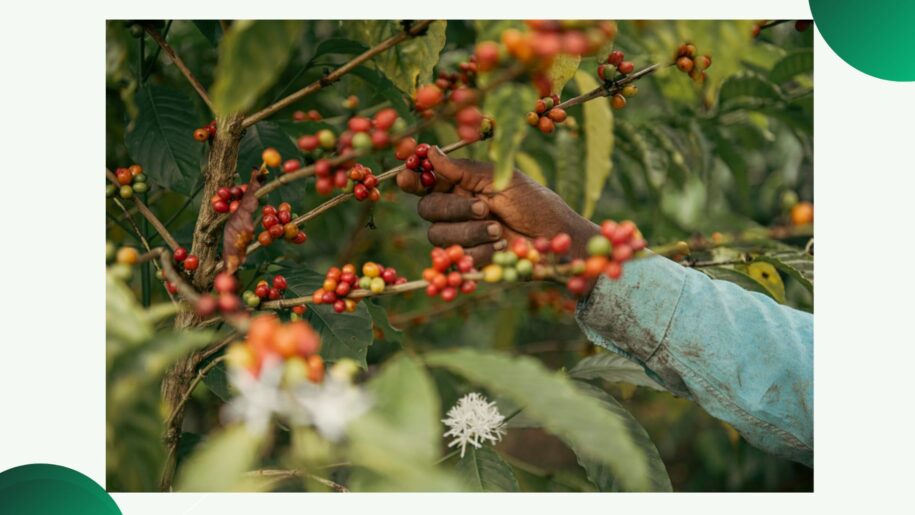The Ugandan coffee market showed some stability in the first part of 2025, despite facing several challenges. Problems like climate change, unpredictable weather, rising costs of production, and low coffee prices are still making it hard for the coffee industry to grow around the world.
Although global coffee prices have gone up recently, partly because of lower supplies coming from Brazil, prices in Uganda have been relatively stable but have also dropped at times. Uganda is expected to be the leader in coffee production growth in the region, with Ethiopia and Kenya also playing important roles.
There’s a growing focus on producing higher-quality products, selling directly to consumers, and using sustainable farming practices, along with looking for demand within Africa itself.
In the 2023/24 marketing year, Uganda was projected to achieve an impressive coffee production milestone of 6.85 million 60-kilogram bags. This figure represents a 4% increase compared to previous years, driven primarily by favorable rainfall patterns and the successful maturation of high-yielding Robusta coffee varieties that were strategically planted between 2017 and 2019.
The Ugandan coffee sector continues to thrive due to its unique advantages, including minimal dependence on agricultural inputs, which reduces costs for farmers and enhances sustainability.
Additionally, the country benefits from a conducive climate characterized by optimal temperatures and rainfall distribution, further supporting stable and consistent coffee production levels year after year.
As a result, Uganda remains a significant player in the global coffee market, capitalizing on its natural resources and agricultural practices to bolster output and quality.
Production and Export Figures
In February 2025, Uganda’s coffee exports reached a total of 555,756 60-kilogram bags, valued at approximately US$167.78 million. The average price for coffee during this period was US$5.03 per kilogram, indicating a significant increase compared to earlier months. This price represents a rise of US cents 29 from the US$4.74 per kilogram average in January 2025 and an increase of US$1.86 from the US$3.17 per kilogram average in February 2024.
When comparing February 2025 to the same month in the prior year, there was a remarkable growth in both the quantity and value of coffee exports. Specifically, the volume exported surged by 27.93%, while the overall value saw an impressive increase of 103.25%.
Looking at a broader timeline, coffee exports over the twelve-month period from March 2024 to February 2025 totalled 6.57 million bags, worth US$1.72 billion. This is an increase from the previous period, March 2023 to February 2024, which recorded exports of 6.14 million bags valued at US$999.84 million. This shift reflects a 6.99% increase in the quantity exported and a substantial 70.71% rise in value.
An examination of the export market reveals that 71% of the total export volume in February 2025 was controlled by just 10 exporters, out of 61 companies actively involved in the market during that month. This concentration is slightly higher than in January 2025, when the top 10 exporters accounted for 70% of the volume. Additionally, Bugisu C/PB coffee achieved the highest price during this period, reaching US$8.18 per kilogram.
Data courtesy of UCDA.
Robusta and Arabica Export Surge Summary
February 2025 witnessed a substantial increase in the export of both Robusta and Arabica coffee varieties compared to February 2024. Robusta exports saw a notable rise of 25.32% in quantity, indicating a significant increase in the physical amount of Robusta coffee shipped.
Data Courtesy of UCDA
Additionally, the value of Robusta exports surged by an impressive 97.39%, signifying a substantial increase in the revenue generated from these exports. Similarly, Arabica exports experienced a 43.60% growth in quantity and a remarkable 132.04% surge in value. These figures highlight a significant expansion in both the volume and value of coffee exports for both varieties.
The total volume of coffee exports in February 2025 exceeded that of February 2024. This increase can be attributed to several factors. Prevailing high coffee prices on the international market played a crucial role, incentivising exporters to release their stockpiles to capitalise on the favourable market conditions.
The higher value of coffee exports was primarily driven by the elevated global coffee prices, resulting in increased revenue generation for exporters.
Current Affairs.
According to Martine Muramba, a coffee analyst in Uganda, the quality of coffee in the country is experiencing a significant improvement, with specialty coffees achieving impressive scores between 85% and 89%, and commercial coffees ranging from 70% to 80%.
Martine explains, “One notable development is the reduction in moisture content of the beans, which has decreased from 12.5% to 12.2%. This subtle change can enhance the preservation and flavour profile of the coffee”.
Additionally, cooperatives have begun to focus on exporting their products to Europe, utilising the favourable Free on Truck (FOT) shipping terms from Kampala and secure payment arrangements that ensure 100% of the freight charges are covered.
The private sector is also contributing to the industry through initiatives aimed at value addition, creating a more competitive coffee market. Moreover, Uganda has started branding its roasted coffee, with private companies and cooperatives selling these locally roasted products, showcasing the unique flavours and qualities that Ugandan coffee has to offer.
Martine says, “We are really pushing on, too. Hopefully, by the end of 2026, many youth, women will have joined the industry as speculated. Uganda is doing well lately and the farmers have registered into groups (cooperatives) to make sure they get a higher value for their coffee, to export more”.
He adds that value addition is playing out well, as many value addition factories have been set up, where they are making many products out of coffee and also export roasted coffee to Europe. “Coffee prices are high now compared to past years. Many farmers have now switched from producing other products to growing coffee”, he explains.
- Uganda Coffee Market Trends For The 1st Quarter of 2025 - May 15, 2025
- Sowing Seeds of Hope to Kahiraini Coffee Society - August 28, 2024
- The Next Wave of Coffee Producers - June 18, 2024
